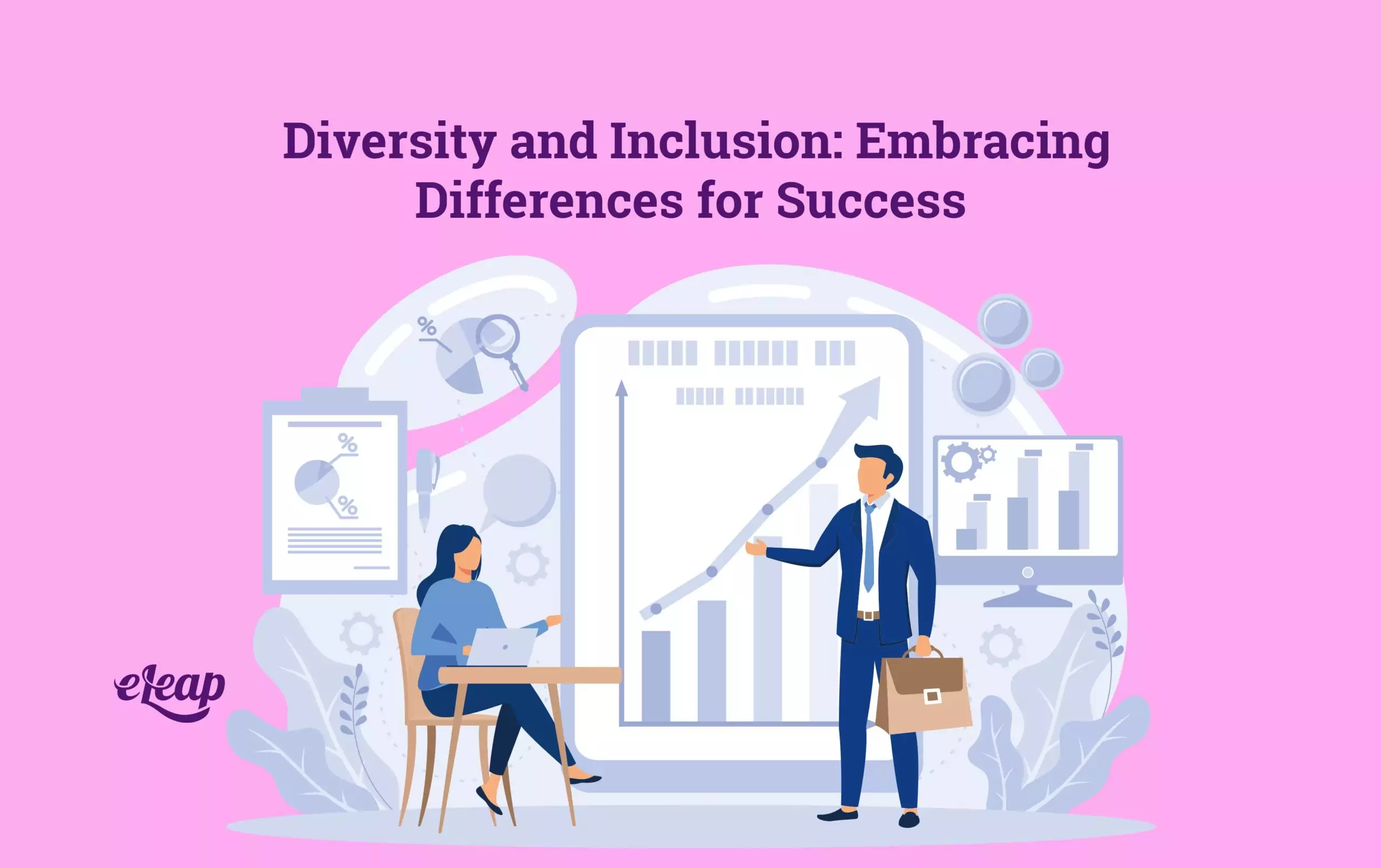Diversity and Inclusion: Embracing Differences for Success

Diversity and inclusion have become crucial aspects of today’s society, extending beyond mere buzzwords and taking center stage in various domains. From education to politics, especially in the workplace, organizations recognize the importance of fostering diverse and inclusive environments. This article explores the significance of diversity and inclusion, the benefits they offer, the challenges faced in their implementation, strategies for creating inclusive workplaces, and the role of leadership in driving these initiatives.
Workplace Diversity and Inclusion: It’s Important

In a globalized world, organizations must adapt to the changing demographics of their workforce and customer base. Diversity encompasses various characteristics, including race, ethnicity, gender, age, sexual orientation, disability, and socioeconomic background. Embracing diversity in the workplace not only enhances creativity and innovation but also improves problem-solving and decision-making processes. Additionally, diverse teams are more likely to understand and cater to the needs of various customer segments, leading to increased customer satisfaction and loyalty.
Benefits of Diversity and Inclusion
- When organizations prioritize diversity and inclusion, they experience numerous benefits:
- Diverse teams bring unique perspectives and experiences, enhancing creativity and out-of-the-box thinking.
- Inclusion fosters a sense of belonging, which increases employee engagement and productivity.
- Diverse and inclusive workplaces attract top talent, resulting in a competitive advantage in the market.
- Studies have also shown that various organizations achieve higher financial performance and are better equipped to navigate complex challenges.
Common Challenges in Implementing Diversity and Inclusion Initiatives
While diversity and inclusion offer significant advantages, implementing these initiatives can be challenging. One common challenge is resistance to change, as some employees may be reluctant to embrace diversity due to unconscious biases or fear of unfamiliarity. A lack of awareness and understanding of diversity-related issues can also hinder progress. Moreover, organizations must ensure that diversity and inclusion efforts go beyond surface-level representation and actively promote inclusivity, fairness, and equity.
Strategies for Creating a Diverse and Inclusive Work Environment
Diversity and inclusion in the workplace require a comprehensive approach. Firstly, organizations should establish an apparent diversity and inclusion policy and communicate it effectively to all employees. Training and education on unconscious bias, cultural competence, and inclusive behaviors can raise awareness and foster an inclusive mindset. Additionally, organizations should actively recruit from diverse talent pools, review their hiring processes for biases, and implement mentorship and sponsorship programs to support underrepresented groups.
The Role of Leadership in Fostering Diversity and Inclusion
Diverse and inclusive initiatives require leadership on the part of the organization. Leadership that prioritizes and demonstrates a commitment to diversity and inclusion sets the tone for the entire organization. Leaders should lead by example, promote diversity in leadership positions, and create opportunities for marginalized groups to excel. Moreover, they must ensure that diversity and inclusion goals are integrated into the organization’s strategic plans and align with its core values.
Training and Education for Diversity and Inclusion
To create lasting change, organizations need to invest in diversity and inclusion training programs. These programs can include workshops, seminars, and online modules that address unconscious bias, cultural sensitivity, and inclusive leadership. Organizations can foster an inclusive culture by equipping employees with the knowledge and skills to navigate diverse work environments.
Measuring and Evaluating Diversity and Inclusion Programs
Measuring the effectiveness of diversity and inclusion programs is crucial for continuous improvement. Organizations can collect data on diversity metrics, such as representation at different levels and retention rates of diverse employees. Regular surveys and feedback sessions can provide insights into employees’ experiences from various backgrounds. This data can guide organizations in refining their strategies and identifying areas for improvement.
Case Studies of Successful Diversity and Inclusion Initiatives
Several organizations have successfully implemented diversity and inclusion initiatives. For example, tech giant Google has prioritized creating a diverse workforce through programs like unconscious bias training, employee resource groups, and inclusive hiring practices. Starbucks is another notable example, with its commitment to diversity reflected in its workforce and supplier diversity initiatives. These case studies inspire and provide valuable insights into practical strategies for fostering diversity and inclusion.
Future Trends in Diversity and Inclusion
As society continues to evolve, so will the field of diversity and inclusion. Future trends may include focusing on intersectionality and recognizing that individuals have multiple identities that can impact their experiences and challenges. Additionally, organizations may incorporate technology-driven solutions to promote inclusivity, such as virtual reality training programs and AI tools to reduce bias in recruitment processes. The ongoing conversation surrounding diversity and inclusion ensures that organizations stay responsive to changing societal dynamics and adapt their strategies accordingly.
Conclusion
Diversity and inclusion are essential for organizations thriving in today’s diverse and interconnected world. By embracing diversity, organizations unlock the potential for innovation, better decision-making, and improved financial performance. However, implementing diversity and inclusion initiatives requires comprehensive strategies, leadership commitment, and continuous measurement. By prioritizing diversity and inclusion and fostering inclusive workplaces, organizations can create environments where all individuals feel valued, empowered, and able to contribute their unique perspectives for the betterment of the organization and society.